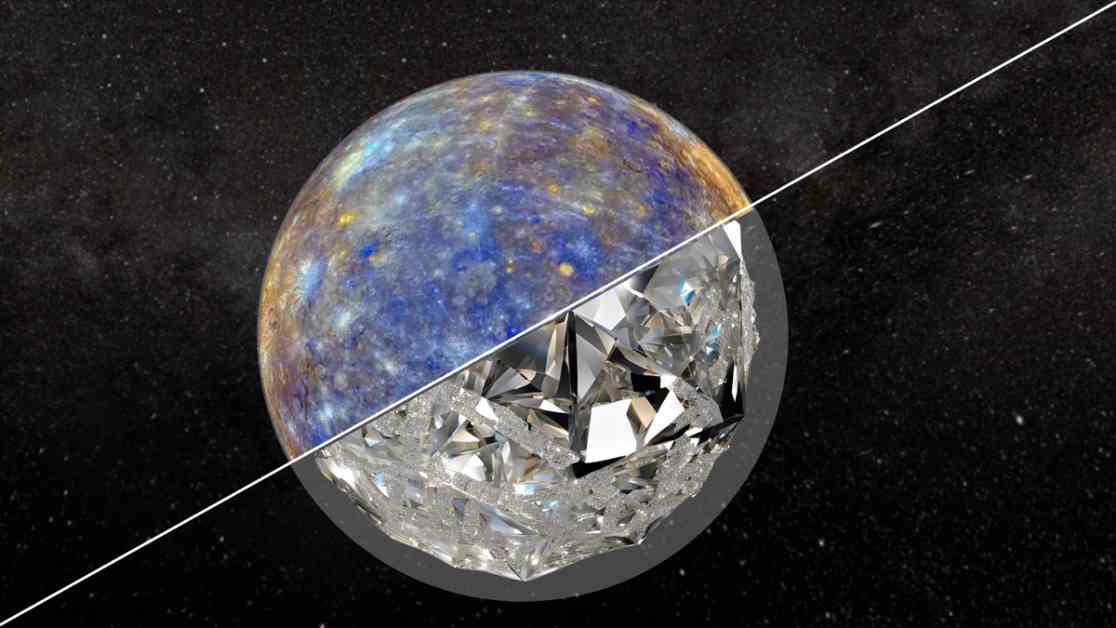NASA’s MESSENGER spacecraft has made a fascinating discovery about Mercury, the smallest planet in our solar system. Scientists have found evidence that there may be a 10-mile-thick layer of diamond beneath the planet’s surface. This discovery adds to the mysteries surrounding Mercury, such as its dark surface, dense core, and the end of its volcanic activity.
Researchers believe that Mercury’s early history involved a carbon-rich magma ocean, which led to the formation of graphite patches on the planet’s surface. These patches hint at the presence of a carbon-rich mantle beneath the surface, which the team now believes is made up of diamond rather than graphite. This new understanding comes from analyzing data collected by the MESSENGER spacecraft, which orbited Mercury from 2004 to 2015.
The team’s research also revealed that Mercury’s mantle is thicker than previously thought, which has implications for the distribution of carbon on the planet. By replicating the extreme pressures and temperatures found inside Mercury, scientists were able to study how minerals in the planet’s mantle could have transformed into diamond over billions of years. This process likely involved the crystallization of the planet’s core, leading to the formation of a dense diamond layer at the boundary between the core and mantle.
The discovery of a diamond layer on Mercury sheds light on the planet’s unique formation compared to other rocky planets like Venus, Earth, and Mars. The high carbon content in Mercury’s early environment likely played a key role in the creation of this diamond layer. This finding opens up new avenues for research into Mercury’s evolution and why its volcanic activity ceased much earlier than on other planets.
Looking ahead, the research team plans to investigate the thermal effects of the diamond layer on Mercury’s internal structure. Data from future missions, such as the upcoming BepiColombo mission in 2026, could provide further insights into the planet’s mysteries. By continuing to study Mercury’s composition and history, scientists hope to unravel more secrets about this enigmatic world.
This groundbreaking research was published in the journal Nature Communications and contributes to our understanding of the solar system’s smallest planet. The discovery of a diamond layer on Mercury highlights the complex processes that shaped the planets in our solar system and offers new perspectives on the evolution of rocky worlds.












